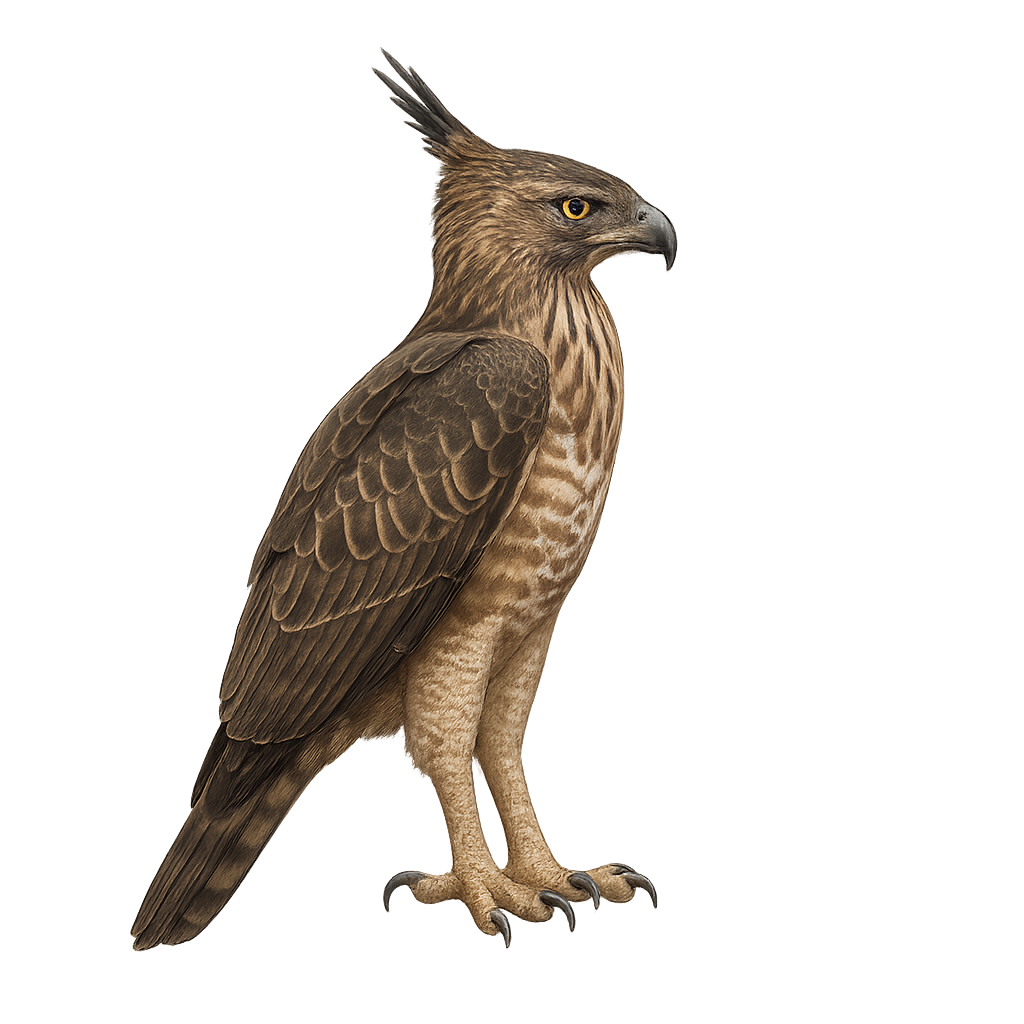Your wildlife photography guide.
Explore the mountain hawk-eagle in detail, study its behavior, prepare your shots.
Where to observe and photograph the mountain hawk-eagle in the wild
Learn where and when to spot the mountain hawk-eagle in the wild, how to identify the species based on distinctive features, and what natural environments it inhabits. The WildlifePhotographer app offers tailored photography tips that reflect the mountain hawk-eagle’s behavior, helping you capture better wildlife images. Explore the full species profile for key information including description, habitat, active periods, and approach techniques.
Mountain Hawk-Eagle
Scientific name: Nisaetus nipalensis

IUCN Status: Near Threatened
Family: ACCIPITRIDAE
Group: Birds
Sensitivity to human approach: Suspicious
Minimum approach distance: 50 m
Courtship display: February to May
Incubation: 40-45 jours
Hatchings: March to July
Habitat:
Mountain forests, tropical forests, wooded areas
Activity period :
Primarily active during the day, with peak activity in the morning and late afternoon.
Identification and description:
The Mountain Hawk-Eagle, Nisaetus nipalensis, is a majestic raptor primarily inhabiting the mountainous forests of Southeast Asia. This large eagle is distinguished by its dark brown plumage, broad wings, and long, barred tail. It has a distinctive crest on its head, often raised, giving it an imposing appearance. A formidable predator, it primarily feeds on small mammals, birds, and reptiles. Its keen eyesight allows it to spot prey from great distances. Although discreet, it is sometimes observed soaring above forests in search of food. The species is currently classified as near threatened due to the loss of its natural habitat.
Recommended lens:
400 mm – adjust based on distance, desired framing (portrait or habitat), and approach conditions.
Photography tips:
To photograph the Mountain Hawk-Eagle, it's essential to equip yourself with a telephoto lens of at least 400mm to capture detailed images from a distance. Look for open areas on the edge of forests where the eagle might be observed in flight. Be patient and discreet, as this bird is suspicious and can easily be startled. The best times to observe it are early morning or late afternoon when the light is soft and the eagle is active. Use a tripod to stabilize your camera and achieve sharp images.
The WildlifePhotographer App is coming soon!
Be the first to explore the best nature spots, track rutting seasons, log your observations, and observe more wildlife.
Already 1 430 wildlife lovers subscribed worldwide

